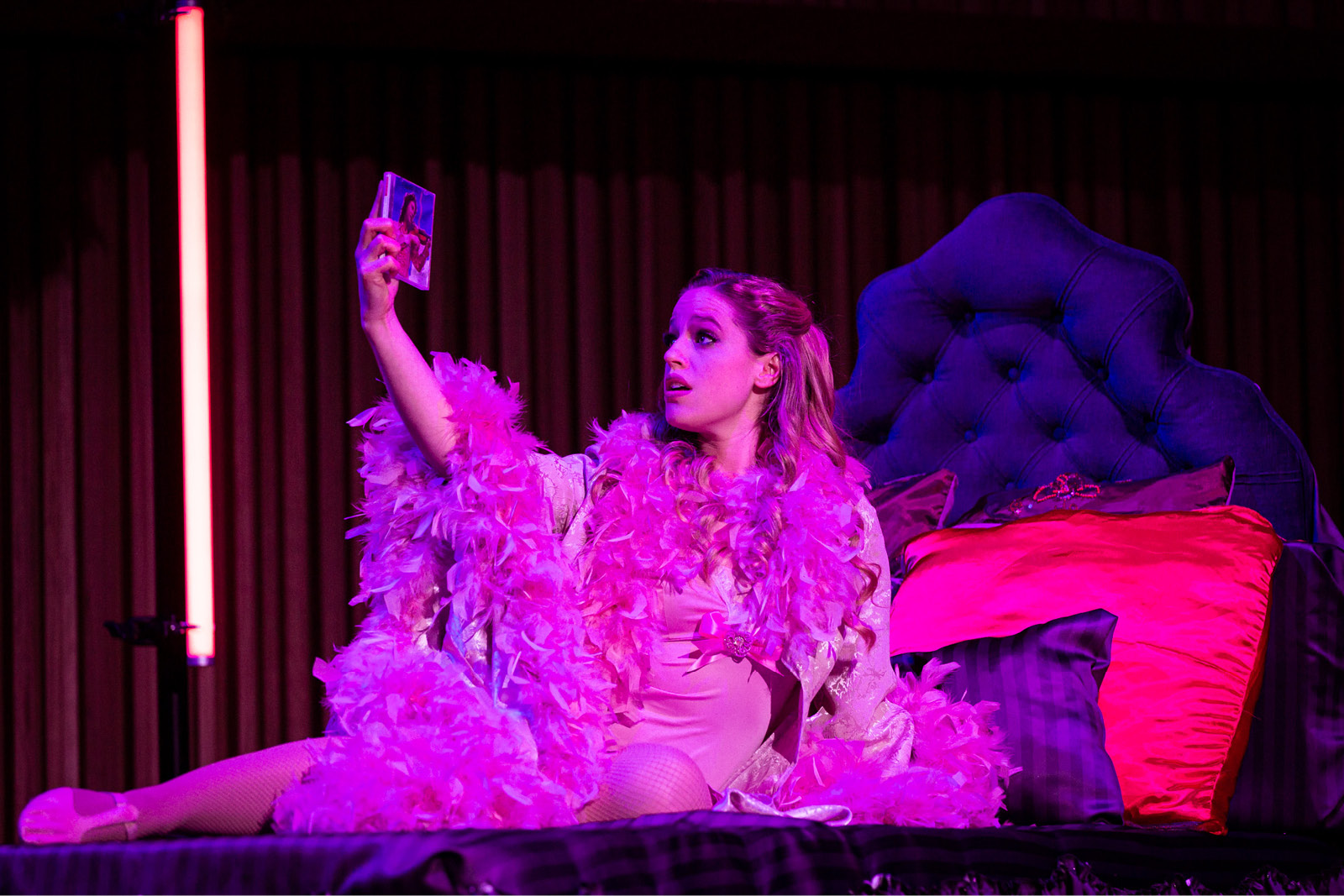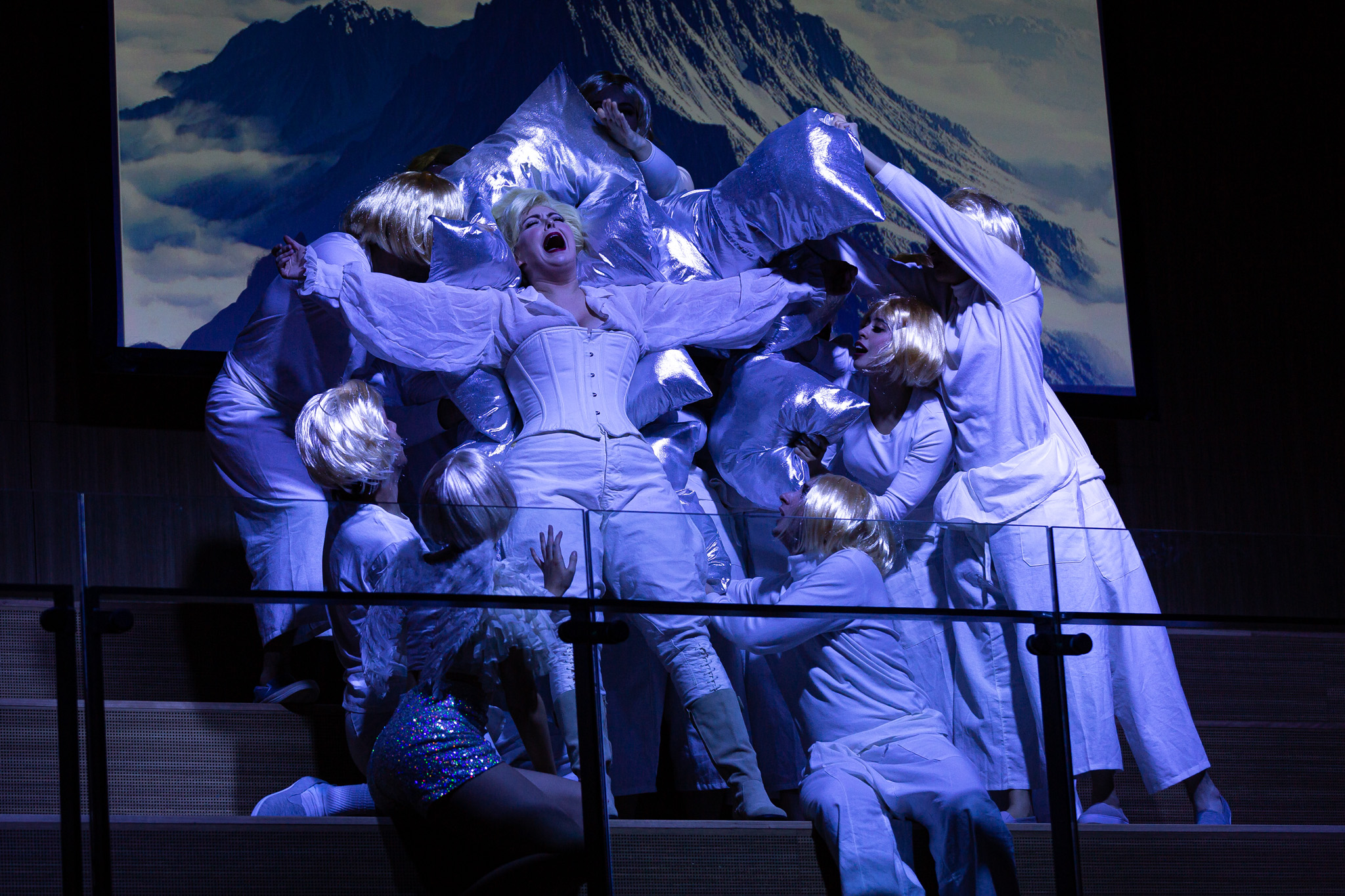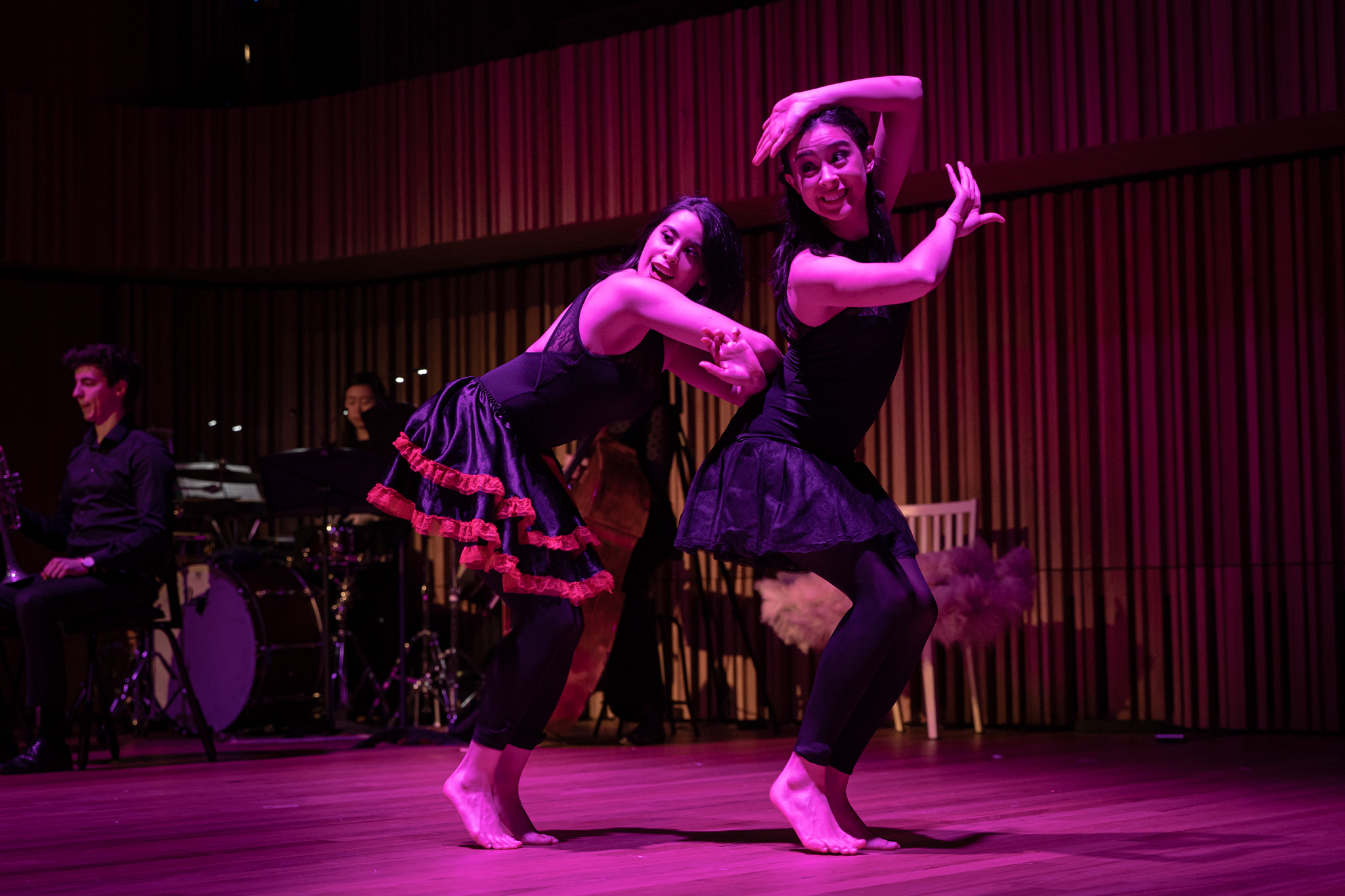Offenbach’s Orphée aux Enfers is one of those evergreens that can sustain an infinite variety of versions and settings. I have seen productions set underwater, on the moon and in the Clinton White House. The present production is set in a kind of neutral zone, somewhere between the farces of the Moulin Rouge and the shenanigans in the current White House.
 Kerrie-Anne Greenland as Eurydice in Melbourne Conservatorium of Music’s Orpheus in the Underworld. Photo supplied
Kerrie-Anne Greenland as Eurydice in Melbourne Conservatorium of Music’s Orpheus in the Underworld. Photo supplied
I’m happy to report that it all works very well indeed. Offenbach’s deliciously frothy music and biting satire survive unharmed and unhindered, no matter how much the setting and the libretto have been updated.
Like many in Melbourne, I am an admirer of Jane Davidson’s productions. They are always imaginative, witty and intelligently conceived. Moreover, she seeks out venues which amplify the ethos of her repertoire. In recent productions, a Bach passion has soared into the heights of a cathedral, Poulenc’s Carmelites have been guillotined in a convent with a mysterious past, and Britten’s Albert Herring has been crowned May King in a dowdy civic hall. One might have expected Offenbach’s Orpheus to be sent gallivanting around the gilded ballroom of Government House. But not this time.
Barely three months ago, the University of Melbourne celebrated the opening of its new Conservatorium building in the cultural precinct of Southbank. The Ian Potter Southbank Centre boasts several new performance venues. The jewel in its crown is the Hanson-Dyer Hall, a 400-seat auditorium in which I have enjoyed performances of orchestral and chamber music, song recitals and now – perhaps improbably – opera!
Davidson deploys the space brilliantly. The action spills breezily over the stage and into the auditorium, out into the aisles, through its many entrances and into the choir loft. This becomes the dreary seat of the gods on Mount Olympus. Had there been an orchestra pit, it would surely have been pressed into service as Hades.
 Esther Counsel as Diana in Melbourne Conservatorium of Music’s Orpheus in the Underworld. Photo supplied
Esther Counsel as Diana in Melbourne Conservatorium of Music’s Orpheus in the Underworld. Photo supplied
The present text updates a version by those two wilful Wharf Review wordsmiths, Jonathan Biggins and Phillip Scott, first heard in Australian Opera performances in 2003, and revised for further performances in 2015. Their revised libretto abounds with cringe-worthy puns, sophomoric rhyming couplets and is peppered with contemporary references: political party factionalism, Andre Rieu’s CDs, ScoMo and cheap Australian wines are all lampooned. Any occasion for off-key double entendres is sexploited to the full.
Perhaps mercifully, there were few references to this age of Donald Trump, always an easy target in such instances. Perhaps Mount Olympus might have had a more golden hue to break up the wholesome whiteness and illustrate that point? The sets, designed by Beizj Studio, were simple and direct and, by necessity, easy to shift around and off stage. Ounie Witherow Aitken’s lighting plot encompassed both stage and auditorium and differentiated the two locales, the unmitigated boredom of heaven (“I’ve had more fun in Adelaide,” laments one of the gods) contrasted with the sleazy romps in the underground clubs of hell.
The casting is impressive. Davidson has assembled a cast of 27, three leads, a double roster of six secondary characters and a chorus of 12. Where many opera schools around the country are yielding to music theatre courses, this census could be unique in our opera environment. Given the energy required in the midst of Melbourne’s flu season, it was also remarkable that this two-act production totalling around 140 minutes could be spread over four performances in a three-day period.
 Amanda Hargreaves and Samantha Hargreaves in Melbourne Conservatorium of Music’s Orpheus in the Underworld. Photo supplied
Amanda Hargreaves and Samantha Hargreaves in Melbourne Conservatorium of Music’s Orpheus in the Underworld. Photo supplied
The vocal and dramatic performances were uniformly excellent. Without singling out each individual, the cast managed to draw the audience into their roles like young, toothy Broadway-bound professionals. Each managed the gear-shift between languages effortlessly, arias mostly in French, and spoken recitatives in English. I will, however, praise the contributions of two singer-dancers, sisters who co-choreographed the show, Samantha and Amanda Hargreaves. They helped to create a vibrant energy that never flagged.
Likewise the onstage band of ten players, huddled together on one side of the stage. They were directed by one of the few non-UniMelb ring-ins, Guy Noble. Anyone who has seen Noble in opera and light symphonic performances will recognise his clarity of vision and direction, ideally suited to scores such as this. He also has a wonderful, off-the-cuff wit which might have been exploited more extensively here. Similarly, the instrumentalists themselves might have been engaged in the staging more purposefully, enhancing their experience in chamber music theatre.
Overall, there was little to quibble about in this production, and much to enjoy and admire.











Comments
Log in to join the conversation.